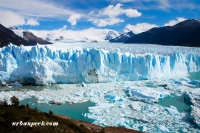
John Shanahan
Flyer from XLNT Foundation: Radiophobia Kills
01.Dec.2016Mohan Doss, Medical Physicist, XLNT Foundation: Extreme irrational fear of things that are relatively harmless or even beneficial in small quantities is a serious problem, as it would make people flee the imaginary threat potentially making them run into real danger. Too many people have Radiophobia, fear of small doses of radiation. The Linear No Threshold (LNT) Hypothesis encourages this phobia in U.S. regulations. The XLNT Foundation is dedicated to getting rid of (Xing out) the LNT hypothesis in order to enhance public health. Eliminating the LNT hypothesis will help rejuvenate nuclear power industry (which has been throttled by radiophobia) thereby improving the quality of life globally. It will also have a tremendous positive impact on human health by enabling major progress in the war on cancer, as described in the Flyer below. Please share the Flyer with your friends and colleagues.
Howard Cork Hayden, Emeritus Professor of Physics: The solar industry employs 210,000 people, while there are only 190,000 employed in coal mines. Considering the tiny amount of solar electricity produced, the solar industry employs about 70 times as many people for the same amount of electricity. The coal industry is developing plans to compete with that kind of job creation. They will get rid of all that heavy machinery and hire millions of miners to use picks and shovels.
Geoffrey Rothwell, Ph.D. Economics, Principal Economist at OECD Nuclear Energy Agency: This book is a unique introduction to the economics and economic uncertainties of nuclear electricity generation. It examines nuclear power’s complex relationships among financial, operational and regulatory cost drivers. It does so as a research monograph and as a textbook by modelling and explaining one of the world’s most opaque technologies using microeconomics, statistics and cost engineering.
Euan Mearns, Geologist: I don’t think humans have the power to alter the climate. I’ve been especially doubtful of the claim that CO2 in the atmosphere is a significant regulator of the earth’s climate. Even If we believe that CO2 is part of earth’s greenhouse gas effect that is making it possible for us to be alive, the CO2 component of earth’s atmosphere is increasing at only about 1 part per 100,000 every 5 years. It will take at least 1,500 years for earth’s CO2 component to increase from the current 40 part per 100,000 to 100 parts per 100,000. That would be 0.10% instead of the current 0.040%.








